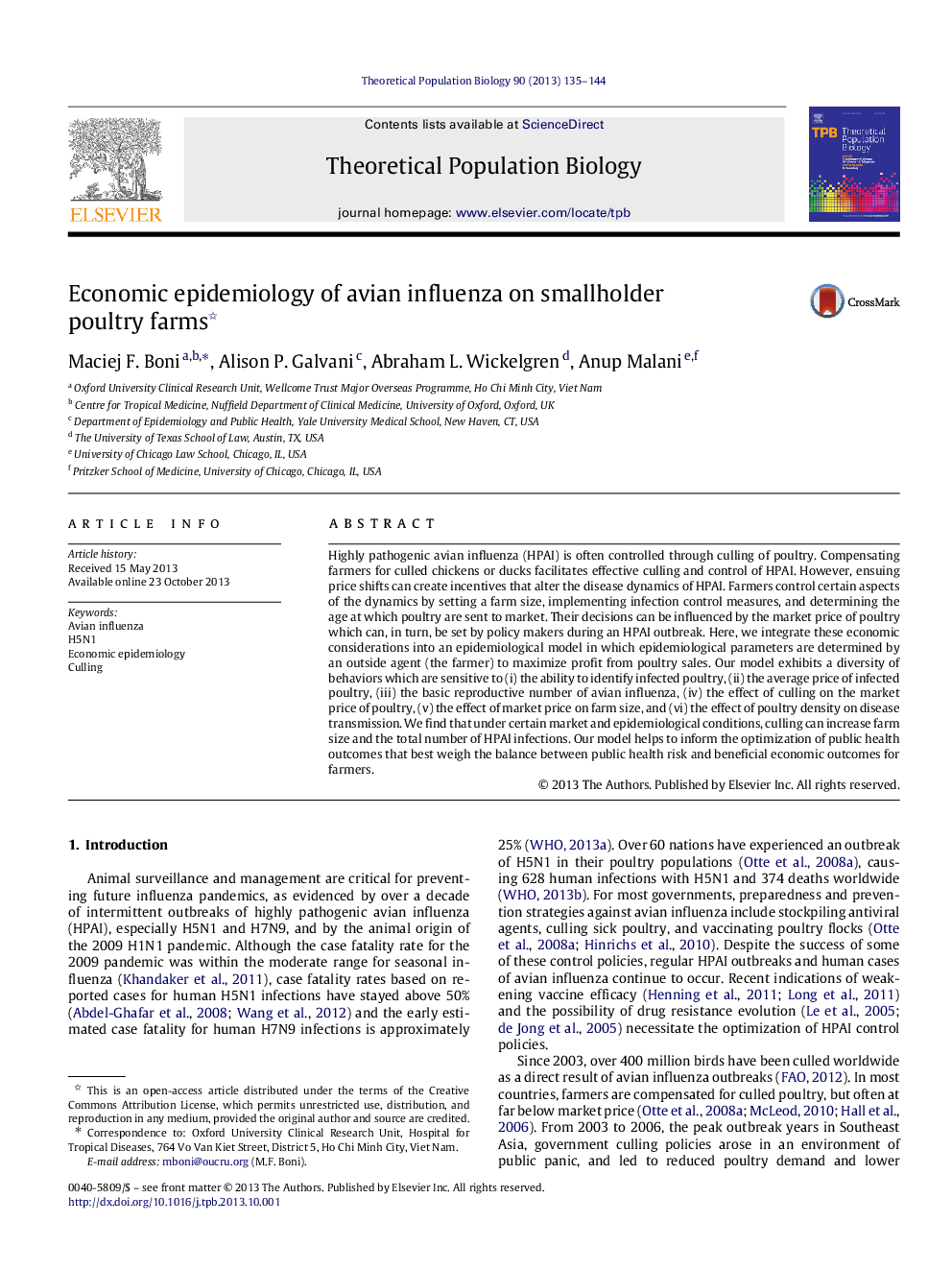| Article ID | Journal | Published Year | Pages | File Type |
|---|---|---|---|---|
| 6372407 | Theoretical Population Biology | 2013 | 10 Pages |
Abstract
Highly pathogenic avian influenza (HPAI) is often controlled through culling of poultry. Compensating farmers for culled chickens or ducks facilitates effective culling and control of HPAI. However, ensuing price shifts can create incentives that alter the disease dynamics of HPAI. Farmers control certain aspects of the dynamics by setting a farm size, implementing infection control measures, and determining the age at which poultry are sent to market. Their decisions can be influenced by the market price of poultry which can, in turn, be set by policy makers during an HPAI outbreak. Here, we integrate these economic considerations into an epidemiological model in which epidemiological parameters are determined by an outside agent (the farmer) to maximize profit from poultry sales. Our model exhibits a diversity of behaviors which are sensitive to (i) the ability to identify infected poultry, (ii) the average price of infected poultry, (iii) the basic reproductive number of avian influenza, (iv) the effect of culling on the market price of poultry, (v) the effect of market price on farm size, and (vi) the effect of poultry density on disease transmission. We find that under certain market and epidemiological conditions, culling can increase farm size and the total number of HPAI infections. Our model helps to inform the optimization of public health outcomes that best weigh the balance between public health risk and beneficial economic outcomes for farmers.
Related Topics
Life Sciences
Agricultural and Biological Sciences
Agricultural and Biological Sciences (General)
Authors
Maciej F. Boni, Alison P. Galvani, Abraham L. Wickelgren, Anup Malani,
